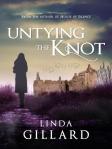How do you judge if your book cover is attracting the right readers? How do you brief a designer, especially if you have little knowledge of design or marketing? What do book cover designers wish authors knew about the process?
There is no better person to ask than Jessica Bell, who you’ve seen on this blog in a number of guises – a memoirist, novelist, poet, publisher, musician and Undercover Soundtrack guest. Jessica also designs witty, eye-catching book covers, both for indie clients and for her imprint Vine Leaves Press – and she’s just released a book Can You Make The Title Bigga? The Chemistry of Book Cover Design.
First question: how long have people have been asking you to write this book?
I have a lot of people asking for advice (which I no longer have time to give), and thought it was time I wrote a book so I could give that advice.
The title made me laugh because I’ve seen this problem so often in many areas of book design. I call it ‘Why Can’t We Emphasise Everything?’ syndrome. Creating a cover isn’t like packing a suitcase. You’re not aiming to cram everything in, especially with a cover. You’re creating a distinctive work, with atmosphere and emotion. Space is as important as detail. (There’s more about this in the book.)
Jessica, aside from clutter, what are the other main mistakes you see with covers – and authors’ ideas of what a cover should be?
Three things:
They think they can send me any old photograph and that I’ll be able to work magic on it. It doesn’t work like that, and I explain why in the book.
They want a cover image that includes details I cannot possibly find on stock sites. They don’t realize that the big 5 publishers have the budgets for custom photo shoots or illustrators to create exactly what they want, and they don’t realize that can cost $2000 or more, whereas a cover with stock photography is likely to cost $500.
And bad typography! The style of font can make or break a cover, even if the imagery is suitable.
If an author or publisher doesn’t know what they want on a cover, how do you arrive at a design?
I send authors a questionnaire. It includes questions about plot, characters, setting, symbolism, themes, etc, which give me a good picture of what the book is about and who the target audience would be. This works really well – it’s much easier for an author to talk about their work, than what they would like on the cover.
In the years I’ve known you, I’ve seen your own books evolve through several makeovers. What was the thinking behind each rebrand?
I used to have a problem designing my own covers, because my pre-conceived ideas are loaded with both my attachment to the story and my visual ideas, and my idea of what kind of readers would like my books. I tried targeting various audiences until I reached a point where I decided to just be true to myself as an artist.
How did they work out?
I find it really difficult to be objective, which means none of my own makeovers have worked. I do have success with makeovers of other people’s books though. A recent example is Melissa Addey. I re-covered two of her series and she tweeted that sales were up 20%.
For my last novel, How Icasia Bloom Touched Happiness, I ended up designing a whole bunch of covers and then got votes from my followers, and also ran a poll on PickFu.

It’s really interesting to look at the voters’ comments on the poll. They’re not what you’d expect! I suppose that proves your point – it’s hard to be objective about your own book.
Yes, the cover that was the most popular was not the one I wanted to use. But I decided to trust the public, and so far so good. It’s the first novel of mine that sells consistently and I continue to get comments saying how the cover made them want to read the book.
Authors and publishers often change a cover as a reboot to reach a new audience. How much can you change the look of a book and still be faithful to the text?
The key is to stay true to your target audience’s expectations about the kind of story. What we want to do is trigger an emotional response from the target audience. As long as the cover triggers the correct response, that’s fine. Obviously, you’re not going to put a naked couple on the cover of a book about golf.
In the book, you talk about how you initially create three sample covers when you’re working for a client, one of them a wild card. Also, that you’ll go wilder with covers for your imprint, Vine Leaves Press. What do you think is the bravest cover you’ve designed? (My own nomination is Hate Mail by Michelle Robertson for Vine Leaves Press.)
I totally agree! I worked on a couple of other ideas before being struck with the one it is today. I wish I had kept them to show you. Basically, everything felt too busy and too suggestive of content, and I also felt that having too much on the cover would give readers too many expectations of content. I wanted the content to speak for itself. To be nothing other than what it is: hate mail that you have not yet read. You know it’s going to hurt, but not how much. You know you probably don’t want to read it, but you are compelled to in a way you cannot understand. I wanted readers to have that same anticipation Michelle would have had before opening her inbox. I think this cover does that.
You mentioned (very kindly) that you wanted to discuss my covers… let’s do that! Anything you feel like saying…
I adore how the covers of your first two novels use subtle colours and very soft imagery that portray bold ideas, and that you are not focussed on making your titles BIGGA!
The big titles! Because, as we were all told in the early days of self-publishing, the book title has to be readable in thumbnail. It ain’t necessarily so.
I think having big titles is something many indie authors are stuck on from the days when they generally just released eBooks and not print. Also, the titles of books are visible on their product pages anyway, so big titles aren’t a necessity. But by all means, make your titles huge if that’s the trend in your genre.
Your latest novel, Ever Rest, is also subtle, but with that splash of colour that really makes it stand out. And it’s so clever using the ripped vinyl cover! A cover I wish I had designed myself.
While we’re on the subject, you might already have twigged this, but when I redesigned My Memories of a Future Life, I was inspired by the first cover you made for your novel Bitter Like Orange Peel.
I loved the use of texture, which – to me – looks rich and literary, and the floating, vulnerable figure with the sense of a luminous inner journey. I was so interested to see in your book how that cover attracted the wrong readers for Bitter Like Orange Peel! What a shame. A beautiful cover that sent the wrong message. I guess we don’t know until we get feedback.
Yes, it attracted the YA crowd, which was not my intention.
You mention you had problems deciding on a title and cover for your design book. I think we can all relate to that. Would you be prepared to share some of the rejects here, both title and cover?
Here is the first cover I designed which is dire:
And how did you find the right one?
After designing this horrible thing, I realized I was just not inspired by the title. And where had my humour gone?! I started brainstorming with my Vine Leaves partner Amie.
(Here, dear readers, is the secret backstage transcript.)
J: Been working with this concept all effing day and can’t make it work. Think I need to scrap it.
A: I think maybe it has something. But it isn’t super-cohesive.
J: When in doubt throw it out.
A: And sleep on it.
J: I think the title is the subtitle. The main title needs to be clever. And fun. What about ‘Let’s Break It Down?’
A: Not in love with that.
J: ‘Take A Leaf Out Of My Book’?
A: Ha ha ha. What about ‘Don’t Judge’?
J: Haha, but I can’t make that work visually. ‘Then The Client Said…’
A: Haha.
J: ‘CMYK My Bitch Up?’
(Many more hahahahahahas.)
J: ‘Can You Make The Title Bigger?’
A: Hahahaha.
J: I could do some clever typography with that.
A: I actually really like it. Especially with the subtitle.
Find Can You Make The Title Bigga here.
For more of Jessica’s book cover designs, check out her design website and her publishing house website Vine Leaves Press. Connect with her on Twitter @iamjessicabell Facebook @jessicabelldesign and @jessbell.vineleaves
There’s a lot more about writing in my Nail Your Novel books – find them here. If you’re curious about my own work, find novels here and my travel memoir here. And if you’re curious about what’s going on at my own writing desk, here’s my latest newsletter. You can subscribe to future updates here.




























